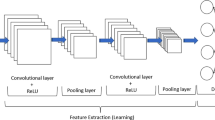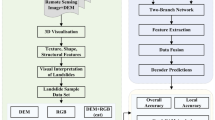Abstract
Hyperspectral images (HSIs) record scenes at different wavelength channels, providing detailed spatial and spectral information. How to storage and process this high-dimensional data plays a vital role in many practical applications, where classification technologies have emerged as excellent processing tools. However, their high computational complexity and energy requirements bring some challenges. Adopting low-power consumption architectures and deep learning (DL) approaches has to provide acceptable computing capabilities without reducing accuracy demand. However, most DL architectures employ single-precision (FP32) to train models, and some big DL architectures will have a limitation on memory and computation resources. This can negatively affect the network learning process. This letter leads these challenges by using mixed precision into DL architectures for HSI classification to speed up the training process and reduce the memory consumption/access. Proposed models are evaluated on four widely used data sets. Also, low and high-power consumption devices are compared, considering NVIDIA Jetson Xavier and Titan RTX GPUs, to evaluate the proposal viability in on-board processing devices. Obtained results demonstrate the efficiency and effectiveness of these models within HSI classification task for both devices. Source codes: https://github.com/mhaut/CNN-MP-HSI.



Similar content being viewed by others
References
Bioucas-Dias JM, Plaza A, Camps-Valls G, Scheunders P, Nasrabadi N, Chanussot J (2013) Hyperspectral remote sensing data analysis and future challenges. IEEE Geosci Remote Sens Mag 1(2):6–36
Fang B, Li Y, Zhang H, Chan JCW (2020) Collaborative learning of lightweight convolutional neural network and deep clustering for hyperspectral image semi-supervised classification with limited training samples. ISPRS J Photogram Remote Sens 161:164–178. https://doi.org/10.1016/j.isprsjprs.2020.01.015
Green RO, Eastwood ML, Sarture CM, Chrien TG, Aronsson M, Chippendale BJ, Faust JA, Pavri BE, Chovit CJ, Solis M et al (1998) Imaging spectroscopy and the airborne visible/infrared imaging spectrometer (aviris). Remote Sens Environ 65(3):227–248
Haut JM, Alcolea A, Paoletti ME, Plaza J, Resano J, Plaza A (2020) Gpu-friendly neural networks for remote sensing scene classification. IEEE Geosci Remote Sens Lett. https://doi.org/10.1109/LGRS.2020.3019378
Haut JM, Bernabé S, Paoletti ME, Fernandez-Beltran R, Plaza A, Plaza J (2018) Low-high-power consumption architectures for deep-learning models applied to hyperspectral image classification. IEEE Geosci Remote Sens Lett 16(5):776–780
Haut JM, Paoletti M, Plaza J, Plaza A (2017) Cloud implementation of the k-means algorithm for hyperspectral image analysis. J Supercomput 73(1):514–529
Haut JM, Paoletti ME, Plaza J, Li J, Plaza A (2018) Active learning with convolutional neural networks for hyperspectral image classification using a new bayesian approach. IEEE Trans Geosci Remote Sens 56(11):6440–6461
Haut JM, Paoletti ME, Plaza J, Plaza A, Li J (2019) Hyperspectral image classification using random occlusion data augmentation. IEEE Geosci Remote Sens Lett 16(11):1751–1755
Jia X, Song S, He W, Wang Y, Rong H, Zhou F, Xie L, Guo Z, Yang Y, Yu L et al (2018) Highly scalable deep learning training system with mixed-precision: training imagenet in four minutes. arXiv preprint arXiv:1807.11205
Jia Z, Maggioni M, Smith J, Scarpazza DP (2019) Dissecting the nvidia turing t4 gpu via microbenchmarking. arXiv preprint arXiv:1903.07486
Kim D, Kwon Y, Liu P, Kim IL, Perry DM, Zhang X, Rodriguez-Rivera G (2016) Apex: automatic programming assignment error explanation. ACM SIGPLAN Notices 51(10):311–327
Kunkel B, Blechinger F, Lutz R, Doerffer R, Van der Piepen H, Schroder M (1988) Rosis (reflective optics system imaging spectrometer)-a candidate instrument for polar platform missions. In: Optoelectronic technologies for remote sensing from space, vol 868. International Society for Optics and Photonics, pp 134–141
Lanaras C, Baltsavias E, Schindler K (2015) Hyperspectral super-resolution by coupled spectral unmixing. In: Proceedings of the IEEE International Conference on Computer Vision, pp 3586–3594
Li P, Han L, Tao X, Zhang X, Grecos C, Plaza A, Ren P (2020) Hashing nets for hashing: a quantized deep learning to hash framework for remote sensing image retrieval. IEEE Trans Geosci Remote Sens 58(10):7331–7345. https://doi.org/10.1109/TGRS.2020.2981997
Lofqvist M, Cano J (2020) Accelerating deep learning applications in space. In: The 34th Annual Small Satellite Conference
Lu J, Lu S, Wang Z, Fang C, Lin J, Wang Z, Du L (2019) Training deep neural networks using posit number system. In: 32nd IEEE International System-on-Chip Conference (SOCC), pp 62–67. https://doi.org/10.1109/SOCC46988.2019.1570558530
Micikevicius P, Narang S, Alben J, Diamos G, Elsen E, Garcia D, Ginsburg B, Houston M, Kuchaiev O, Venkatesh G, Wu H (2018) Mixed precision training. In: International Conference on Learning Representations
Paoletti M, Haut J, Plaza J, Plaza A (2018) A new deep convolutional neural network for fast hyperspectral image classification. ISPRS J Photogramm Remote Sens 145:120–147
Paoletti ME, Haut JM, Fernandez-Beltran R, Plaza J, Plaza A, Li J, Pla F (2018) Capsule networks for hyperspectral image classification. IEEE Trans Geosci Remote Sens 57(4):2145–2160
Paoletti ME, Haut JM, Fernandez-Beltran R, Plaza J, Plaza AJ, Pla F (2018) Deep pyramidal residual networks for spectral-spatial hyperspectral image classification. IEEE Trans Geosci Remote Sens 57(2):740–754
Paoletti ME, Haut JM, Sidonio N, Plaza J, Plaza A (2021) Ghostnet for hyperspectral image classification. IEEE Trans Geosci Remote Sens. https://doi.org/10.1109/TGRS.2021.3050257
Paoletti ME, Haut JM, Tao X, Plaza J, Plaza A (2020) Flop-reduction through memory allocations within cnn for hyperspectral image classification. IEEE Trans Geosci Remote Sens. https://doi.org/10.1109/TGRS.2020.3024730
Roy SK, Chatterjee S, Bhattacharyya S, Chaudhuri BB, Platoš J (2020) Lightweight spectral-spatial squeeze-and- excitation residual bag-of-features learning for hyperspectral classification. IEEE Trans Geosci Remote Sens 58(8):5277–5290. https://doi.org/10.1109/TGRS.2019.2961681
Tao X, Cui T, Ren P (2019) Cofactor-based efficient endmember extraction for green algae area estimation. IEEE Geosci Remote Sens Lett 16(6):849–853
Yu J, Huang T (2019) Autoslim: towards one-shot architecture search for channel numbers. arXiv preprint arXiv:1903.11728
Yue J, Zhao W, Mao S, Liu H (2015) Spectral-spatial classification of hyperspectral images using deep convolutional neural networks. Remote Sens Lett 6(6):468–477
Acknowledgements
Supported by FEDER and Junta de Extremadura (GR18060).
Author information
Authors and Affiliations
Corresponding author
Additional information
Publisher's Note
Springer Nature remains neutral with regard to jurisdictional claims in published maps and institutional affiliations.
Rights and permissions
About this article
Cite this article
Paoletti, M.E., Tao, X., Haut, J.M. et al. Deep mixed precision for hyperspectral image classification. J Supercomput 77, 9190–9201 (2021). https://doi.org/10.1007/s11227-021-03638-2
Accepted:
Published:
Issue Date:
DOI: https://doi.org/10.1007/s11227-021-03638-2




